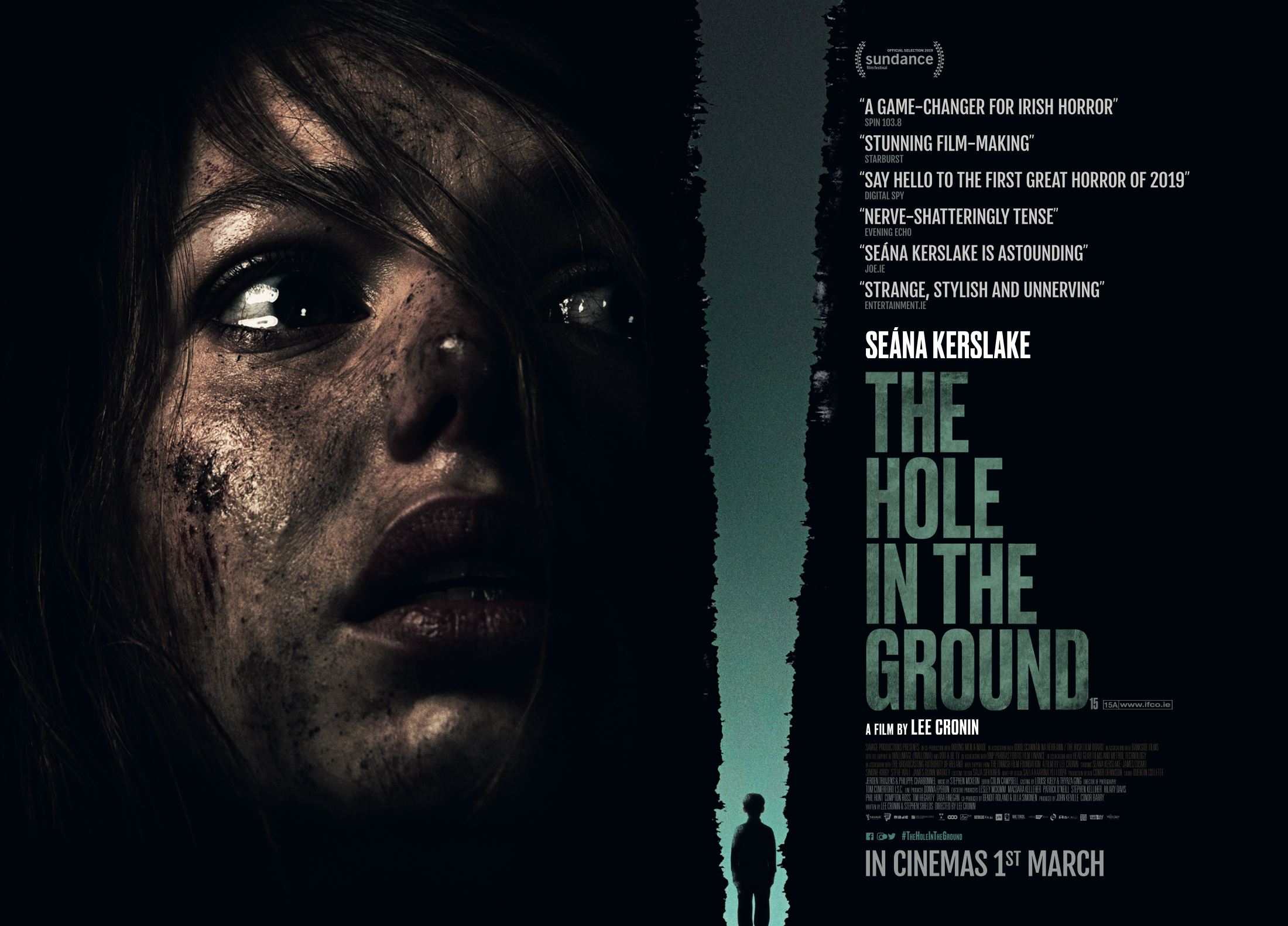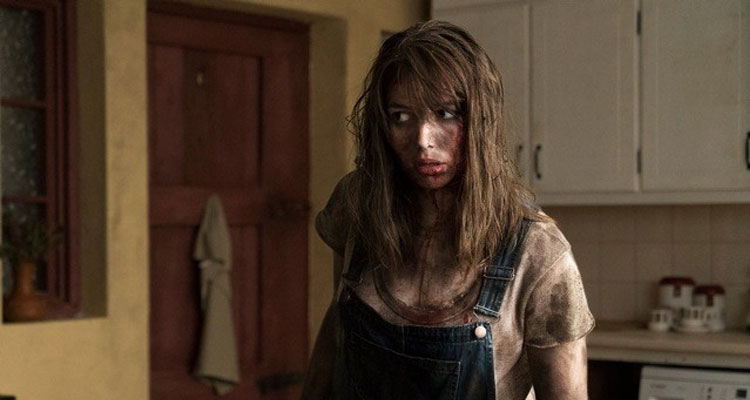It’s been dubbed ‘The biggest Irish horror film ever’ and it’s easy to see why. The movie had it’s world premiere at the renowned Sundance Film Festival and has been snapped up by top US film distributors A24. We caught up with visionary director Lee Cronin to talk about the film that will be terrifying Irish audiences on March 1st.
Tell us about the background to making ‘The Hole In The Ground’?
The initial concept for The Hole in the Ground was rolling around my head for quite a few years. It was never a lightbulb moment, but a slow gathering of different thoughts. The development process is always a long one, and this film was no different. We spent a couple of years getting the screenplay just right before taking it into pre-production. I had written a draft solo that I wasn’t happy with, and brought on another writer called Stephen Shields for the second draft. His fresh voice gave some extra energy to the project and we worked closely all the way through the process. It’s great to co-write and share ideas.
The film is very different from anything Seána Kerslake has done before. Was this part of the appeal for her?
I can’t speak for Seána’s love of horror, but she’s certainly a smart actress with excellent taste. We had a number of meetings to discuss the project, and it was clear from the outset that Seána saw a real character in Sarah whose skin she could crawl under and bring to life. I certainly think part of the appeal for Seána, was an opportunity to take on quite a different type of role. She was playing a mother for a start, and a mother that has to go through the mill both emotionally and physically. She dove in headfirst and took on some serious physical challenges during the shoot.
Did you give Seana or any of the crew other movies to watch for research?
I certainly had a number of inspirational works that I used to communicate my ideas with various cast and crew members. This was not just movies, but also images and photographs. I wanted to created a film with a really strong visual language and style and felt the best way to communicate that was through other images. Myself and the director of photography Tom Comerford spent a lot of time mapping out the colour pallete and visual journey of the film, and we used a lot of images both still and moving as inspiration.
The film requires a very strong child actor to play the role of Chris, was he difficult to cast?
I think finding a younger performer is always a daunting task, but one which you have to take on truly believing you will find the right person. And we did. It was a process of seeing lots of great young actors, and finding one who could play Chris with all of the subtle touches his character needed. James was in the conversation from the very beginning, and he just got better and better with each call back we did. Making that final choice between him and one other boy was a really difficult one, but the moment we did, it just felt right. I think he really is a star in the making.
How did younger actor James Quinn Markey get on during some of the scarier scenes?
James just loved taking part in all the scarier moments in the film. I don’t think he was daunted by any of them. He knew what his job was, and he was so well prepared for everything. He has a great ability to turn on the sinister when required, and then to be the sweetest young lad in the world. I think the thing he feared most was having to eat pasta, which he hated and had to eat a LOT of on camera. But, he soldiered on, like the true pro he is.
How did you prepare him and his parents for what was to come?
The best way to prepare anyone for the new experience of being in a film like this is just to be really honest about everything you are doing. I was very clear with James and his parents from the very start about what to expect, and we had a truly wonderful group of people around them all the time to make sure they were comfortable with what we were trying to achieve.
Tell us about the use of music in the film, it really helps build the tension.
The original score for the film was composed by Stephen McKeon. It was absolutely one of the best parts of the entire post production process. We decided early on that we wanted to create everything with real organic sounds and instruments and to only use a computer for recording and mixing. I think the scores strength is how it really picks it’s moments. We didn’t want to overload the film, but we also wanted to surprise you with music when we had the chance. Silence can be as important as anything, and we worked for months on getting the musical balance just right.
The nursery rhyme used in the trailer and over the end credits is terrifying, how did this particular piece of music come about?
My Dad used to always bash out Weile Weile Waile on guitar whenever there was a family party and the lyrics would terrify me. It’s such a dark and sinister song, but has always traditionally been delivered with a fun upbeat tone. I always loved the idea of hearing a haunting version of it. Based on what The Hole in the Ground was about, it felt like the perfect fit. Myself and the film’s producer John Keville both love Lisa Hannigan’s work, and we felt she would be the perfect artist to create a truly unique rendition of the song. Thankfully, she was up for the idea and brought us back something really special. Despite the fact it’s over the credits, it’s absolutely one of my favourite parts of the film.
You shot the movie in Dublin, Kildare and Wicklow, how long did the shoot take?
We shot the film over 24 days. There’s no such thing as enough time on a film shoot, but the producers and financiers really supported me and gave me as much time as they possibly could.
How difficult is it to build tension and pacing in a film like this?
So much of the tension building happens inside the edit suite. Myself and my long time editor Colin Campbell really took our time at finessing the rising sense of dread in the film. You do as much of this as you can on set through how you shoot and style the film, and of course through the performances, but there so much fine tuning work to be done back in the edit suite to maximise and squeeze every last drop of tension you can from the material. We made sure to test the film with audiences a few times. There’s nothing like the pressure of showing off semi-finished work to a room full of strangers to really question if you are making the right choices in the right places.
Can you talk about some of the CGI work in the film?
In particular the giant sink hole, how did you settle on the design of how this should look?
There’s a lot more CGI in the film than it may appear, and I always like to use visual effects to enhance and expand the world I am creating. We considered for a very brief moment what it would be like to create the sinkhole in the film for real, but always knew it would be a task for CGI artists.
When approaching the creation of something like this, it’s really important to me to use as many real elements as possible as part of the overall creation. So in every sinkhole shot in the film, there are things that are very much real. From trees to soil texture and of course sound. The sound of the sinkhole plays a huge part in giving it a sense of character, personality, and of making it something to fear. We were able to use the design to inspire the sounds it makes, but also the design to inspire the sound. There were a lot of versions created during the post-process.
I wanted the sinkhole to feel organic and tactile, but also to have a really eerie and unsettling vibe. We used lots of small details to achieve this, and gave it the very very subtle feeling of an eye to it, almost like it might be watching you if you look closely.
Top film distributor A24 has picked up the US rights, what does that mean for the film?
First and foremost it means it’s going to get seen by audiences in the US, which is great for everybody who has worked tirelessly on the movie. A24 are a force of nature in independent film distribution, and I’m really pleased that the film is part of their offbeat family now. They’ve been supportive since they acquired the rights. Equally, the film has sold in lots of countries to lots of distributors, and it has to said how excited I am to be bringing the film with Wildcard Distribution to Irish audiences. What happens at home, really matters to me. I want audiences around the country to have a really good time watching this movie. And I hope they get scared as hell!
Were you expecting such a huge buzz for the film before it even hit cinemas?
You always hope for a good buzz around the work you dedicate yourself to, and so far the sounds around the film are really positive. I hope that continues and it becomes something people remember and maybe return to more than once!!
Horror movies are finding bigger audiences at the box office, what do you think is the appeal of recent horror hits?
I think it’s a great time for genre film, and horror is really blazing the way forward with this. It’s hard to define exactly why it’s so successful right now, but long may it continue. I think there has been a greater investment in character in some recent horror films, and audiences always respond to work that isn’t spoon fed to them. It’s not just about blood and gore, it’s about concept and execution and there are some insanely talented filmmakers delivering some stunning films. Plus, everyone loves a good scare from time to time…
Do you have any plans for your follow-up project?
Absolutely! I’m currently working on a supernatural thriller with the support of Screen Ireland and my ever trusted producers. I’ve also written another screenplay based on a previous short film called Ghost Train. I hope I’ll be rolling camera again before too long.


THE HOLE IN THE GROUND is at Irish cinemas from March 1st 2019


